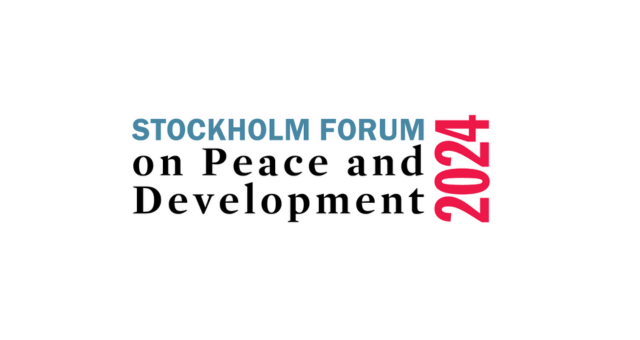Transforming political parties in the middle of a pandemic: The moment for online voting?

Online voting has never faced a situation as favorable as today. Amid the current COVID-19 pandemic, online voting is increasingly becoming the most logical solution for all types of elections. At the national and local level, the speed of innovation in special voting arrangements is unprecedented. Electoral management bodies all over the world are pondering how to adapt to the new normal, and how to address some of the risks associated with organizing elections during the pandemic. But this is not only limited to national and local elections. Political parties, which in theory are democratic entities, are even better positioned to adopt online voting systems internally. Moreover, properly instituting online voting mechanisms internally might have a transformative effect in the way the party works; in how democratic the party is, and ultimately, in how capable to party is of being the transmission belt between citizens and power. Yet, the path is full of challenges.
Political parties are complex organizations. Many of their decisions, from selection of leadership and management teams, to deciding on joining an electoral alliance, are done through deliberation and often by voting. As with elections, the current COVID-19 pandemic is fundamentally disrupting these processes. Although not clear yet, it is likely that many big party conventions, assemblies and gatherings of members of the party will be severely limited, if not cancelled altogether in the foreseeable future. In addition, most of the challenges of running an election at the national and local level are also present in internal elections on political party level. Online voting for internal decision-making in political parties has never been more attractive and needed than now.
Online voting for political parties can have significant benefits and several uses. Its most common use is for leadership selection, as this is usually the biggest voting exercise carried out internally by a political party. In Canada, for instance, all the main political parties include online voting in their leadership selection procedures. By allowing online voting, more people should in theory be able to cast their vote, not limiting voting rights to those capable of attending a party conference, or to those with a convenient office location. But beyond leadership election, the party can become more democratic internally by subjecting more decisions to popular vote among members. These decisions can include key party decisions like joining an alliance, supporting a vote of no confidence, or deciding their position on a referendum. It can also include more day-to-day party functions, such as the approval of policy positions, internal rules and more which covers virtually all aspects of party life. In the current situation, online voting might as well be the only alternative to maintaining these procedures.
Yet, implementing online voting for political parties would be a challenging process. Firstly, the structural aspect. Changing the way in which a party runs elections, and therefore takes decisions, is a deep systemic change. Online voting allows for a significant enlargement of the electorate -those with the right to vote- but giving voting rights to more people inside the party may also shift the way the party takes decisions. This, in turn, can shift power balances and create tensions within parties. Yet, research also points to the fact that online voting in political parties ushers more personalistic politics. Online voting processes rarely disapprove of what the leadership of the party decides, and usually it becomes a ratifying mechanism. If implementing online voting, parties should first consider how the decision-making process will be influenced. This includes deciding what process will be subject to voting—detailed policy, leadership, management... — and who will get the right to vote—all card-carrying members, only those with positions in the structure, those that sign up as sympathizers etc.
Secondly, parties may find difficulties in consolidating an electoral roll. Parties need to find a secure method to provide the voting credentials to each member. The party could by mail or email send unique log-in credentials, ask members to register on a voting website or app—or a combination of both. Afterwards, the party might want to introduce a two-layer verification system, to ensure that the correct member of the party uses their log-in credentials, such as asking for a password, a member ID, etc., right before casting the vote. To carry out any of these methods, the party needs a perfectly up-to-date and complete database of members. Implementing an online voting system may, at the same time, be a good incentive to complete such database, giving members a good reason to make sure their information is correct.
The third challenge concerns trust. Online voting brings a wide array of trust challenges. Traditional paper-based polling gives voters two fundamental trust elements. The voter knows what their vote says (cast-as-intended). Most elections also allow for verifying systems to make sure each vote is counted properly (recorded-as-cast). These two basic trust features become a challenge for online voting. To solve this, parties could use End-to-End verification (E2E), in which any individual can both verify that their vote was registered as intended (cast-as-intended) and that it was recorded in the database accordingly (recorded-as-cast). Including these two elements and providing verification access to all individuals, as is generally the case for paper-based elections, is a key aspect to increase the trust and security of online voting.
Online voting is not a panacea that can solve all internal problems of political parties. Even further, in some countries with low internet penetration it would not be an option unless it is tied to a widely used mobile payment or exchange service, which implies further problems. The current circumstances are undoubtedly providing valid arguments for considering online voting for political parties. With several big party conventions cancelled or fundamentally affected by COVID-19, and with the unstoppable advance of and increasing use of online technology, such as online banking, voting for political parties makes more sense now than ever.
Online voting can be considered a temporary solution, but if implemented with a long-term perspective, it could also support party transformation into more democratic organizations. Online voting allows parties to deepen their democratic culture by subjecting more decision to democratic vote in an efficient and effective way and to make leadership more accountable to members. With shifting roles and demands of political party members, online voting can also be the anchoring point in which parties start building new forms of political party membership.



